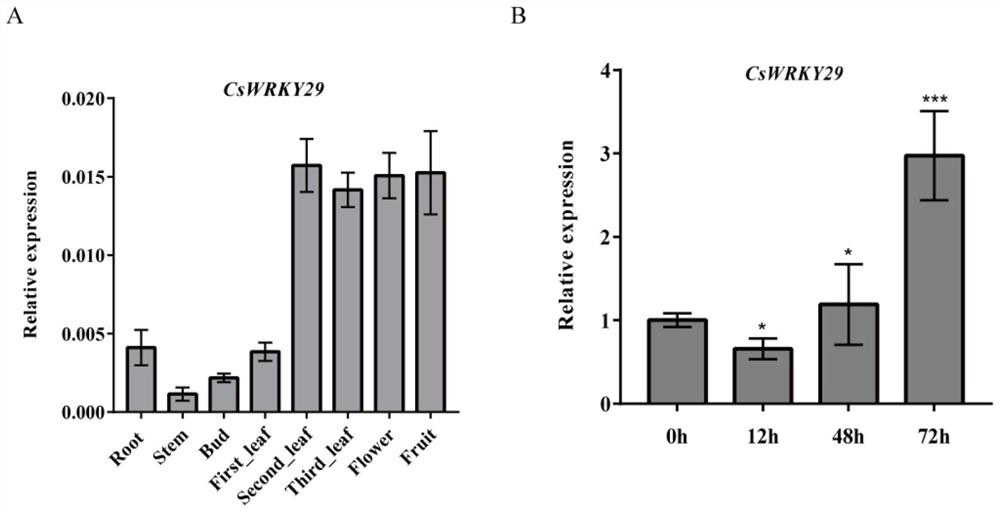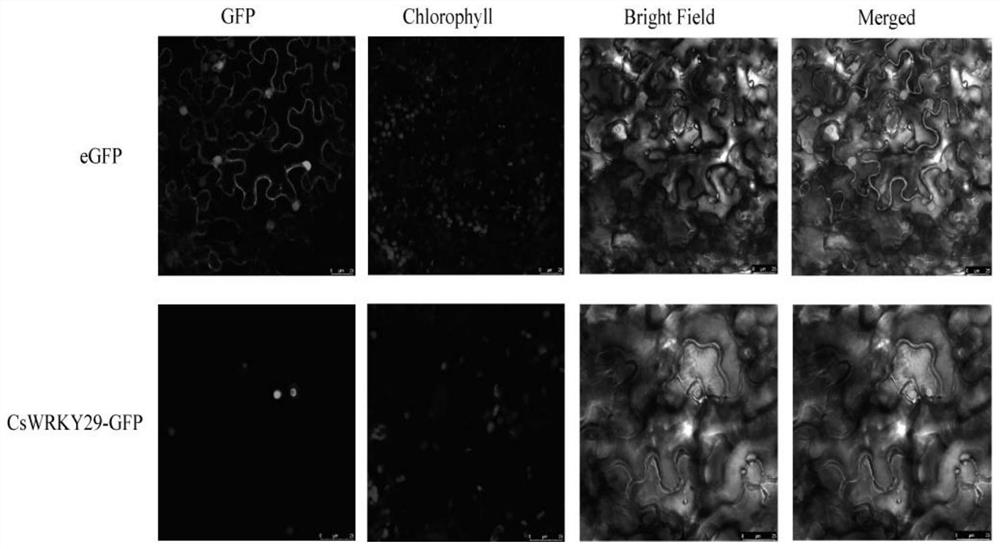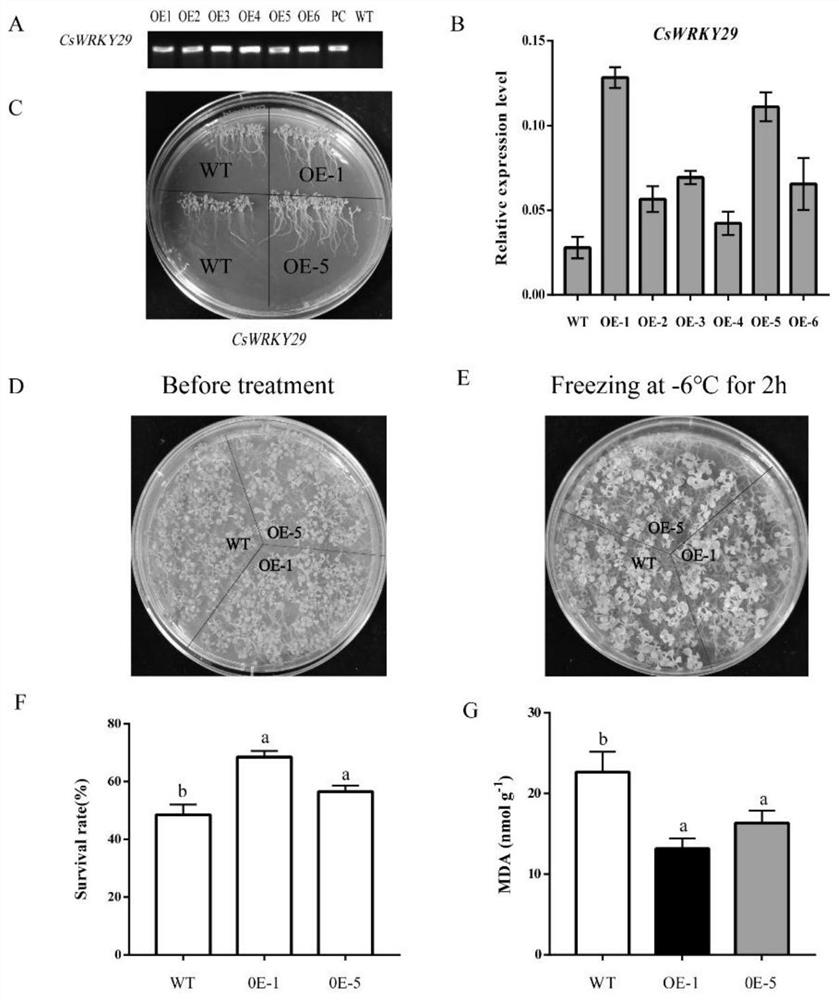Camellia sinensis(L.)O.Kuntze) WRKY29 gene and application thereof to improving cold resistance of plants
A cold resistance, tea tree technology, applied in the field of genetic engineering, can solve problems that are rarely reported
- Summary
- Abstract
- Description
- Claims
- Application Information
AI Technical Summary
Problems solved by technology
Method used
Image
Examples
Embodiment 1
[0020] 1. Cloning and sequence structure analysis of CsWRKY29 gene
[0021] Tea tree WRKY29 gene (i.e. CsWRKY29 gene) is a tea tree WRKY class transcription factor gene, and its cloning and sequence structure analysis are as follows:
[0022] Shucha, a national-level tea tree variety, was first planted in the Agricultural Industrial Park of Anhui Agricultural University, Hefei, Luyang District, Anhui Province. The young leaves were used for RNA extraction. Total RNA was extracted using RNAprep Pure Plant Kit (Tiangen, Beijing, China) according to the instructions, and the RNA content and quality were detected with a spectrophotometer.
[0023] Reverse transcription to generate the first strand: take 1 μg RNA as template, configure according to PrimeScript II 1st StrandcDNASynthesis Kit (Takara Biotech, China) kit instructions, add Oligo dT Primer (50 μM) 0.6 μl, Random 6mers (50 μM) 0.4 μl, dNTP Mixture (10mM each) 1μl, RNase Free dH 2 Make up to 10 μl with O, denature at 65...
PUM
 Login to View More
Login to View More Abstract
Description
Claims
Application Information
 Login to View More
Login to View More - R&D
- Intellectual Property
- Life Sciences
- Materials
- Tech Scout
- Unparalleled Data Quality
- Higher Quality Content
- 60% Fewer Hallucinations
Browse by: Latest US Patents, China's latest patents, Technical Efficacy Thesaurus, Application Domain, Technology Topic, Popular Technical Reports.
© 2025 PatSnap. All rights reserved.Legal|Privacy policy|Modern Slavery Act Transparency Statement|Sitemap|About US| Contact US: help@patsnap.com



